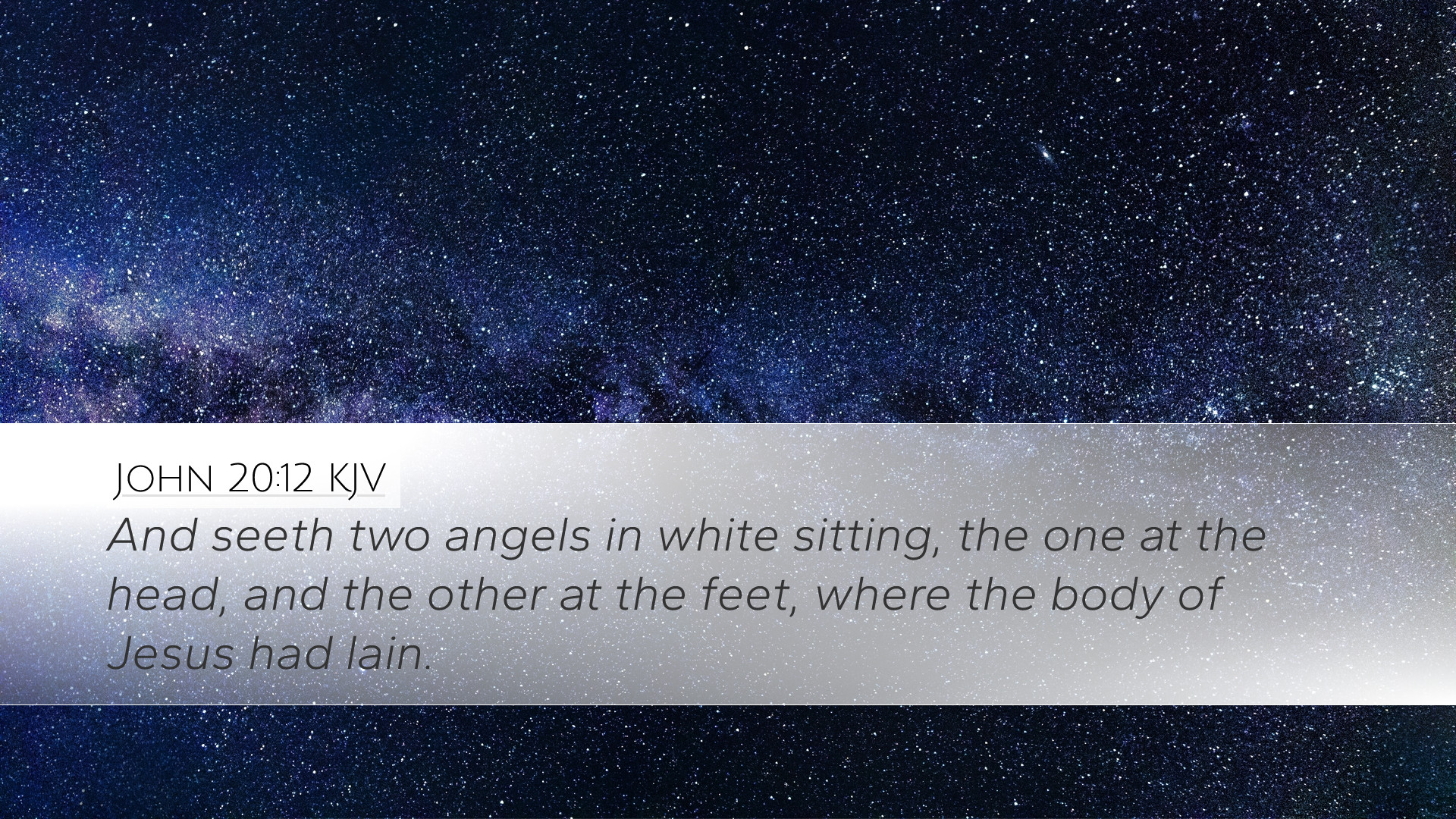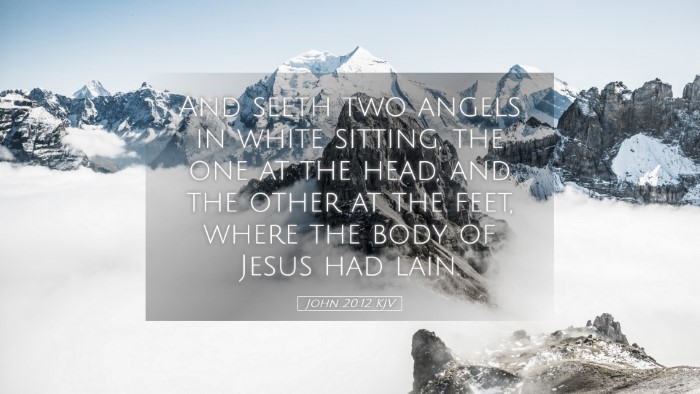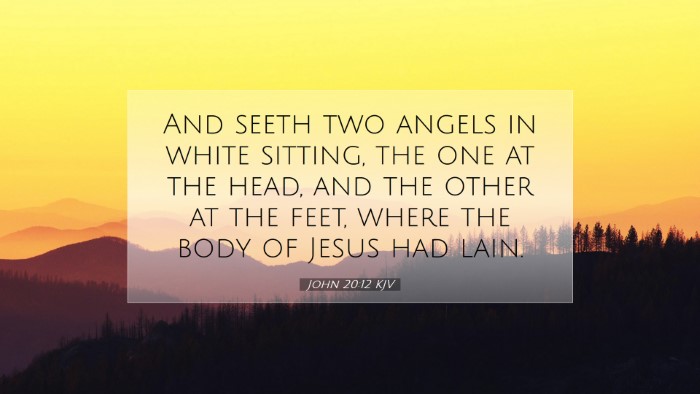Commentary on John 20:12
In John 20:12, we find a pivotal moment in the Gospel narrative that involves Mary Magdalene's discovery of the empty tomb. The verse reads, "And she sees two angels in white sitting, one at the head and the other at the feet, where the body of Jesus had lain." This encounter is rich in theological significance and serves as a crucial point for understanding the resurrection of Christ.
Contextual Overview
The context of John 20 revolves around the post-resurrection appearances of Jesus. Early on the first day of the week, Mary Magdalene visits the tomb, only to find it empty. Her immediate reaction is fear and confusion, as is further exhibited throughout this chapter. This moment of Mary encountering the angels sets the stage for her ultimate meeting with the risen Christ.
Insights from Matthew Henry
Matthew Henry emphasizes that Mary's visit to the tomb exemplifies her loyalty and love for Jesus. Despite the deep sorrow she experiences at the loss of her Savior, her dedication leads her to seek Him in death as she did in life. Henry observes that her experience signifies the importance of seeking Christ. The presence of angels signifies God’s assurance amidst uncertainty, highlighting the divine intervention in human affairs.
- Angels: Henry describes the angels’ presence as a significant aspect of God’s revelation. They serve as God’s messengers, bringing hope, and reminding believers of the divine promise of resurrection.
- Reassurance: The angels' position, sitting where Jesus had lain, underscores that Jesus is no longer dead, but alive. This moment is a transition from despair to hope.
Insights from Albert Barnes
Albert Barnes offers a detailed analysis of the textual and theological nuances in this passage. He remarks that the dual presence of angels symbolizes the truth and validity of Christ's resurrection through heavenly confirmation. The fact that they appear to Mary, a woman, speaks volumes about the value and role of women in the early church.
- Women as First Witnesses: Barnes points out that Mary Magdalene is the first to witness the empty tomb and the angels, highlighting the integral role women play in the Gospel narrative.
- The Role of Angels: Barnes discusses the purpose of angels in scripture. In this instance, they serve not only to provide comfort but also to announce the truth of the resurrection message.
Insights from Adam Clarke
Adam Clarke’s commentary delves into the symbolism present in this moment. He notes that the angels sitting where Jesus had been signifies the complete fulfillment of sacrificial death. Their white garments signify purity and holiness, which aligns with Christ's nature and His resurrection promise.
- Symbol of Fulfillment: Clarke argues that this scene is a divine affirmation of the completed work of Christ, emphasizing that sin and death have been conquered.
- Hope for Believers: The resurrection of Christ provides believers with hope, and the presence of angels is a reminder of the heavenly peace that accompanies Jesus' triumph over death.
Theological Implications
The verse carries profound theological implications regarding resurrection, hope, and the fulfillment of God's promises. The encounter between Mary and the angels introduces a transition point in Christian theology, moving from despair to the triumphant proclamation of the resurrection.
- Resurrection Faith: The empty tomb coupled with angelic visitation underscores the assurance of resurrection, urging believers to embrace a faith rooted in Christ’s victory over death.
- Witnesses to the Resurrection: The significance of angelic beings as witnesses highlights the divine endorsement of Jesus' resurrection, compelling believers to bear witness to this central tenet of faith.
Practical Application
For pastors, students, and theologians, John 20:12 serves as a reminder of the importance of searching for Jesus even in moments of grief and confusion. The angels’ presence reassures believers of God’s active role in lives, encouraging them to look beyond their circumstances towards the hope found in Christ’s resurrection.
- Encouragement in Trials: Just as Mary sought Jesus through her sorrow, believers are encouraged to seek Him actively, knowing He meets them not only in sorrow but also in joy.
- Witness to the World: The commission to bear witness to the resurrection continues today. Believers are called to embody the message of hope, sharing it with a world in despair.
Conclusion
John 20:12 captures a moment of divine revelation, hope, and theological depth. Insights drawn from the commentaries of Matthew Henry, Albert Barnes, and Adam Clarke provide a layered understanding of this encounter. It challenges believers to consider their role in witnessing to the resurrection and emphasizes the profound hope that arises from the empty tomb—a hope that reshapes lives and communities.


